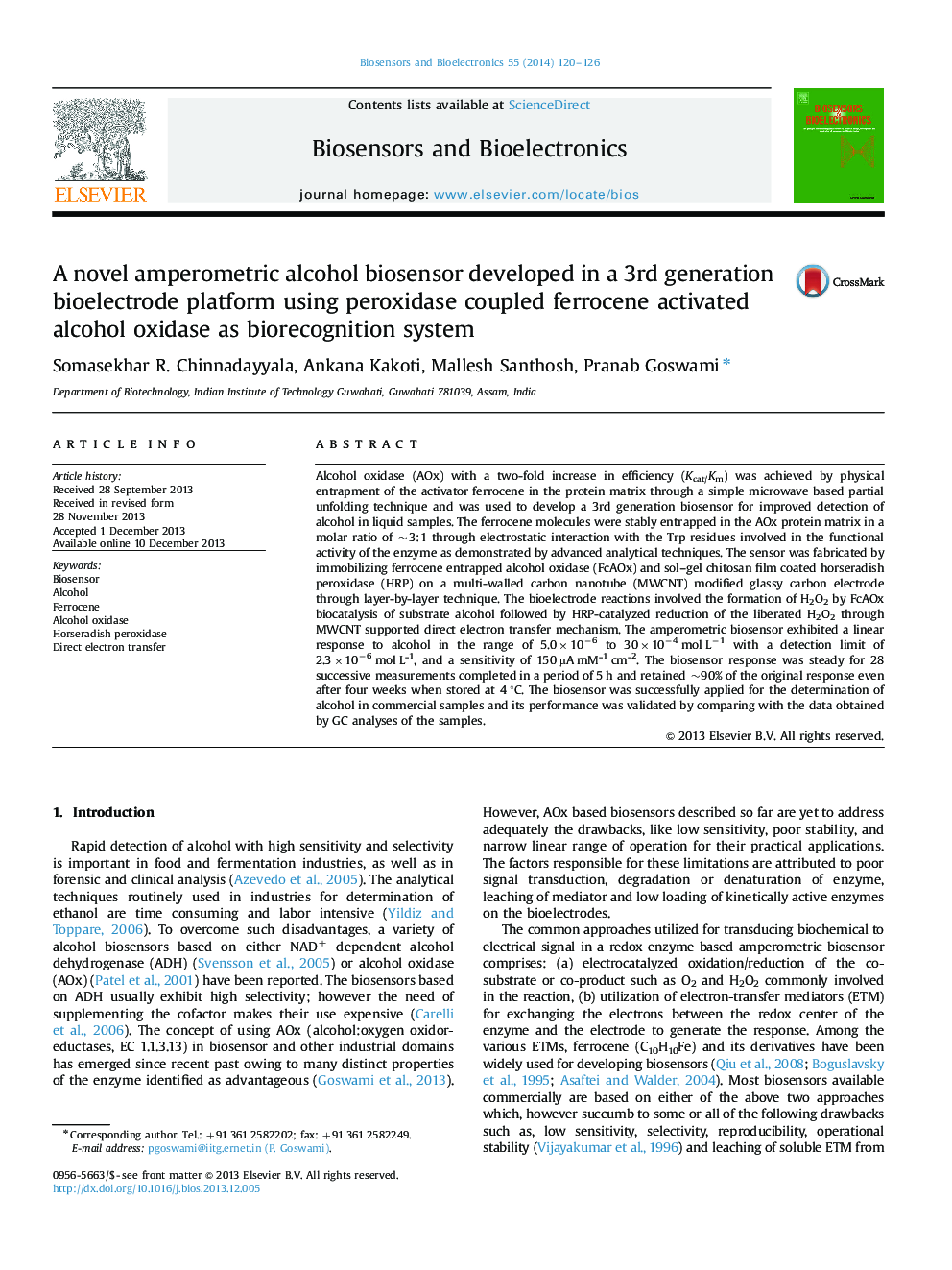| کد مقاله | کد نشریه | سال انتشار | مقاله انگلیسی | نسخه تمام متن |
|---|---|---|---|---|
| 866479 | 1470976 | 2014 | 7 صفحه PDF | دانلود رایگان |

• A 3rd generation alcohol biosensor with improved efficiency was developed.
• Ferrocene entrapped alcohol oxidase and HRP were used as biorecognition system.
• The kcat/km of ferrocene entrapped alcohol oxidase was increased to 2-folds.
• The ferrocene was stably entrapped in the protein by a microwave based technique.
• The biosensor was successfully applied for analyzing commercial samples.
Alcohol oxidase (AOx) with a two-fold increase in efficiency (Kcat/Km) was achieved by physical entrapment of the activator ferrocene in the protein matrix through a simple microwave based partial unfolding technique and was used to develop a 3rd generation biosensor for improved detection of alcohol in liquid samples. The ferrocene molecules were stably entrapped in the AOx protein matrix in a molar ratio of ~3:1 through electrostatic interaction with the Trp residues involved in the functional activity of the enzyme as demonstrated by advanced analytical techniques. The sensor was fabricated by immobilizing ferrocene entrapped alcohol oxidase (FcAOx) and sol–gel chitosan film coated horseradish peroxidase (HRP) on a multi-walled carbon nanotube (MWCNT) modified glassy carbon electrode through layer-by-layer technique. The bioelectrode reactions involved the formation of H2O2 by FcAOx biocatalysis of substrate alcohol followed by HRP-catalyzed reduction of the liberated H2O2 through MWCNT supported direct electron transfer mechanism. The amperometric biosensor exhibited a linear response to alcohol in the range of 5.0×10−6 to 30×10−4 mol L−1 with a detection limit of 2.3×10−6 mol Lˉ1, and a sensitivity of 150 µA mMˉ1 cmˉ2. The biosensor response was steady for 28 successive measurements completed in a period of 5 h and retained ~90% of the original response even after four weeks when stored at 4 °C. The biosensor was successfully applied for the determination of alcohol in commercial samples and its performance was validated by comparing with the data obtained by GC analyses of the samples.
Journal: Biosensors and Bioelectronics - Volume 55, 15 May 2014, Pages 120–126